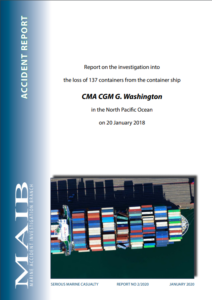In fact, the UK MAIB recently issued its investigation report for the accident on the then UK-flagged container ship CMA CGM G. Washington while it was experiencing very heavy seas in the North Pacific Ocean during its passage from Xiamen, China to Los Angeles, USA.
The incident
UK MAIB informs that it was at 0127 on 20 January 2018 when the then UK fagged container ship CMA CGM G. Washington unexpectedly rolled 20° to starboard, paused for several seconds and then rolled 20° to port.
The ship was experiencing heavy seas in the North Pacific Ocean while on passage from Xiamen, China to Los Angeles, USA.
As the sun rose later that morning, it was discovered that container bays 18, 54 and 58 had collapsed, amounting to 137 containers to be lost overboard and a further 85 to be damaged.
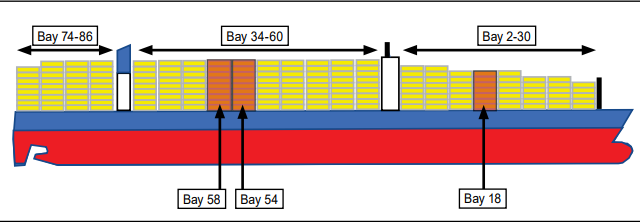
Probable cause
The MAIB investigation concluded that the collapse of all three bays probably occurred during the 20° rolls.
It is said that the amplitude of the rolls exceeded the ship’s estimated roll limits and was almost certainly the consequence of parametric rolling, which had been recorded by the ship’s motion monitoring decision support tool.
The risk of parametric rolling was not identified by the master or his bridge team because they were unaware of the full capabilities of the decision support tool, and therefore were unaware of its predictions.
The investigation identified several factors that would have adversely affected the safety of the container stows on deck, including the reduced structural strength of non-standard 53ft containers; inaccurate container weight declarations; mis-stowed containers as well as loose lashings.
Specifically, UK MAIB reports that:
- Bay 54 collapsed because the acceleration forces generated during the large rolls exceeded the structural strength of the non-standard 53ft containers stowed in the bay.
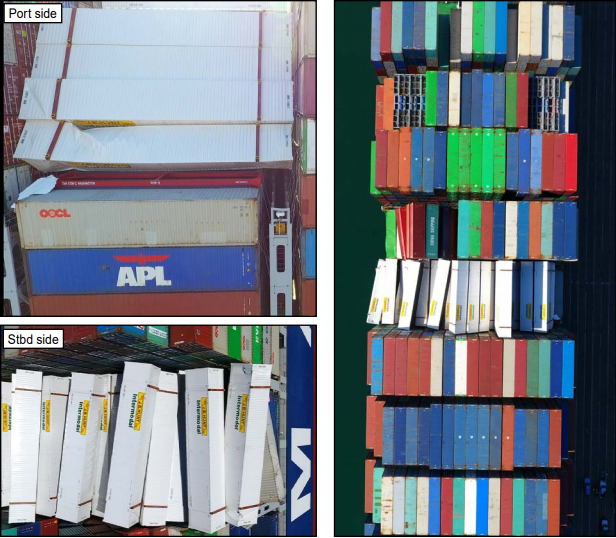
- Bay 58 collapsed because some of its containers were struck by the 53ft containers as they toppled overboard.
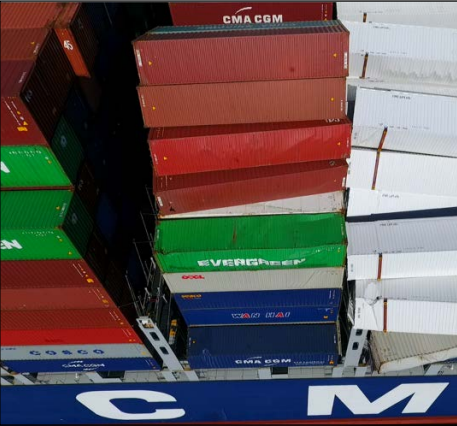
- Bay 18 collapsed as a result of a combination of factors and was probably initiated by the structural failure of one or more containers.
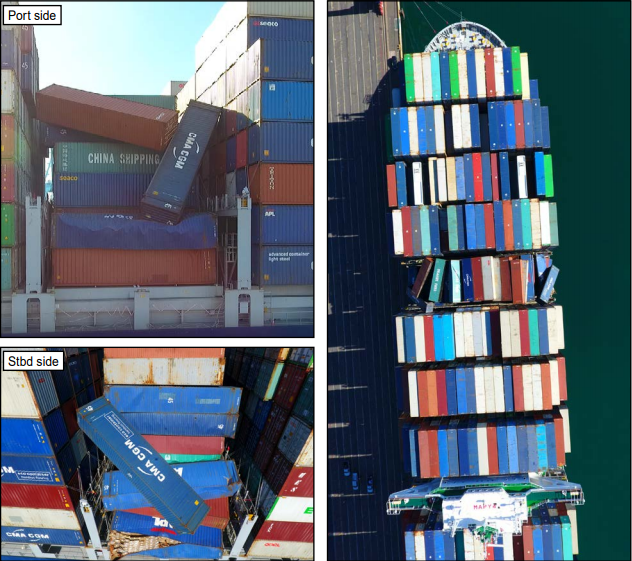
Actions taken
The report now suggests that action has been taken by CMA Ships, together with ABB, the manufacturer of the Octopus decision support tool, with the aim to improve its presentation of ship-handling advice to masters in bad weather.
The training package for operators of this system has also been reviewed.
Bureau Veritas, CMA CGM G. Washington’s classification society, has also amended its rules for the carriage of 53ft containers.
Recommendations
The UK MAIB now recommends:
- CMA ships, to ensure that, where container terminals routinely weigh containers prior to loading, the cargo plan is updated to reflect these weights.
- The Maritime and Coastguard Agency, to promote UK container owners’ involvement in Bureau Internationale des Containers databases.
- Bureau Veritas, to amend its rules to require the approved lashing software installed on the onboard loading and lashing computer to calculate and display maximum roll and pitch angles associated with ship loading condition and intended passage; and, review its rules and approval procedure to ensure Container Safety Certification data is accurately reflected within the ship’s loading and lashing computer, whatever the type of container, compliant with ISO standard or not.
To find out more about this UK MAIB investigation report, you can click on the PDF bellow.































